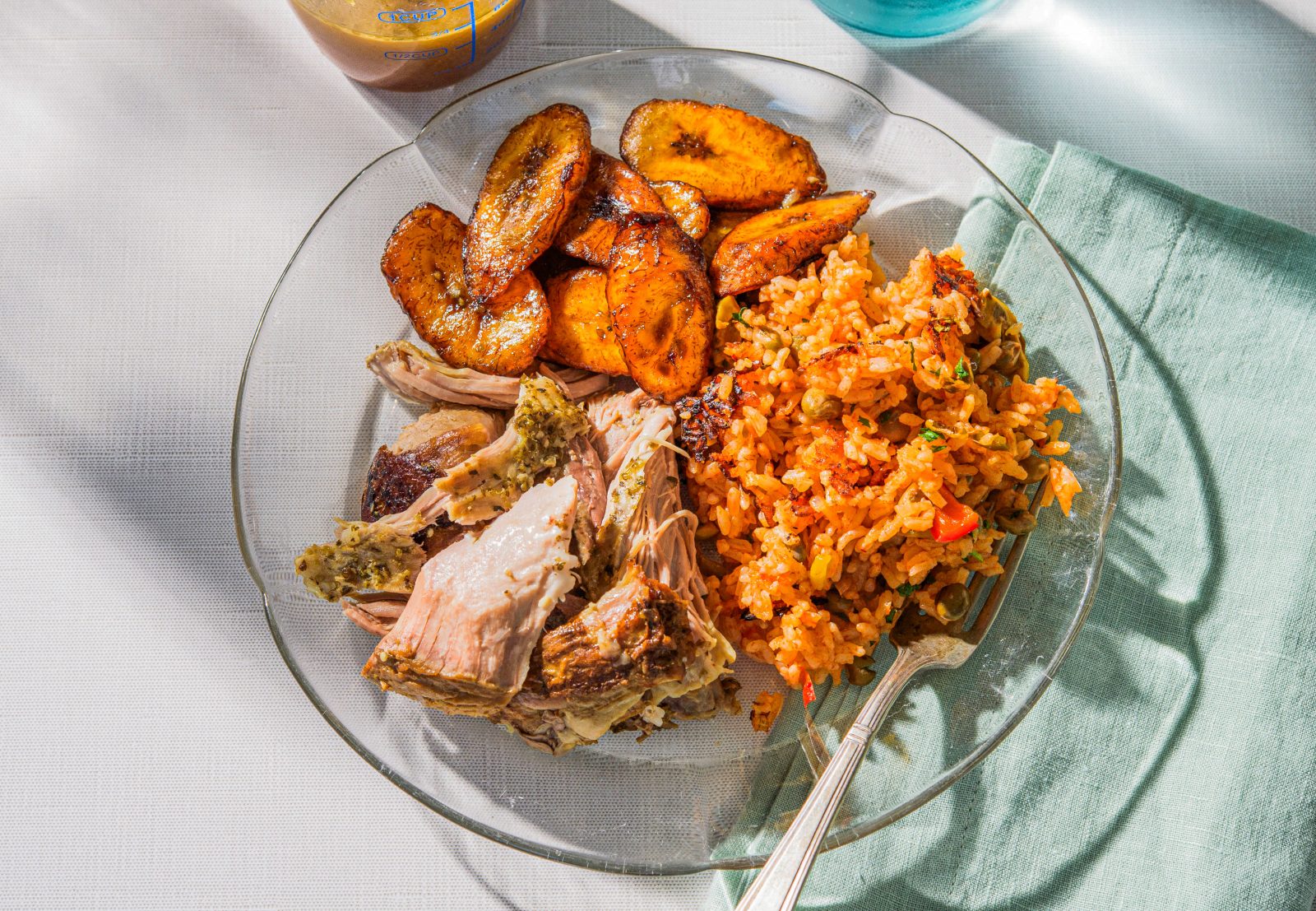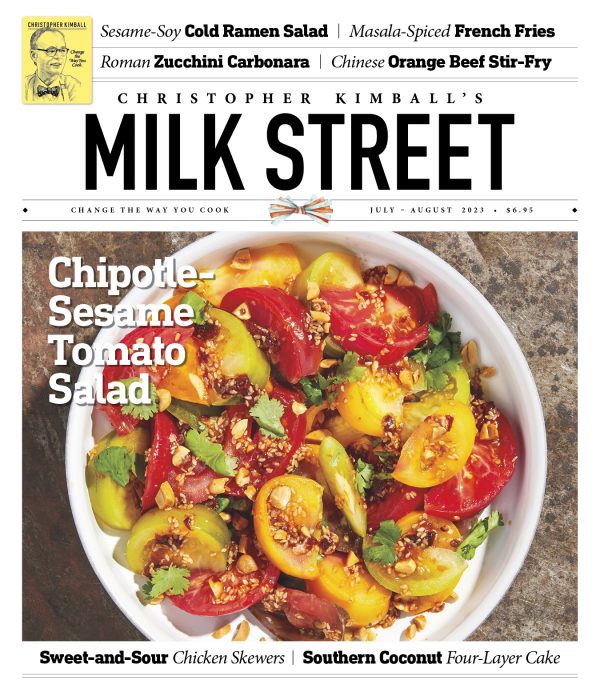Your email address is required to begin the subscription process. We will use it for customer service and other communications from Milk Street. You can unsubscribe from receiving our emails at any time.

Puerto Rican Slow-Cooked Pork Roast (Pérnil al Caldero)
When readying the house for family gatherings and holidays, Teryluz Andreu’s mother, Tere, always set two extra places at the dinner table. Despite being a professor and busy mother of four, Tere was a generous hostess, welcoming any guest who might stop by on a whim. When feeding a crowd, her go-to was pérnil al caldero: a Puerto Rican staple of succulent slow-cooked pork with shatteringly crisp skin. Pérnil is a pork roast, usually either the shoulder or ham, and caldero refers to the dish’s cooking vessel—an aluminum pot with rounded sides, a tight-fitting lid and excellent heat conduction. For Andreu, who recently relocated to Miami by way of Chicago, the dish is a reminder of celebratory times and growing up in Humacao, a small beach town in southeastern Puerto Rico. When she set out to replicate her mother’s pérnil, Andreu knew how to make the adobo: a garlicky, oregano-spiced marinade enhanced by tangy white vinegar. But achieving the dish’s characteristic crisp skin on the outside, with juicy meat inside, “evaded her every time.” Through many rounds of testing, we found the best way to ensure fall-apart-tender meat as well as golden, crackling skin was by braising the roast stovetop, then removing the skin as a single piece and frying it in a skillet. Of course, a caldero is the traditional choice for preparing pérnil al caldero, but a large Dutch oven (one with a capacity of 7 to 8 quarts) works perfectly well.
8
Servings
6 hours
45 minutes active, plus refrigeration
Ingredients
-
15
medium garlic cloves, peeled, divided
-
2
tablespoons dried oregano, divided
Directions
-
01In a mortar, combine 10 garlic cloves, 1 tablespoon oregano, 1 tablespoon vinegar, 1 tablespoon olive oil, 1½ tablespoons kosher salt and 1 tablespoon pepper. Pound with the pestle to form a smooth paste.
Pardon the interruption
You need to be a Milk Street Digital Member to see the full recipe
JOIN MILK STREET DIGITAL & PRINT
12 WEEKS FOR JUST $1
and get access to all of our recipes and articles online, as well as in print.
GET DIGITAL & PRINT


